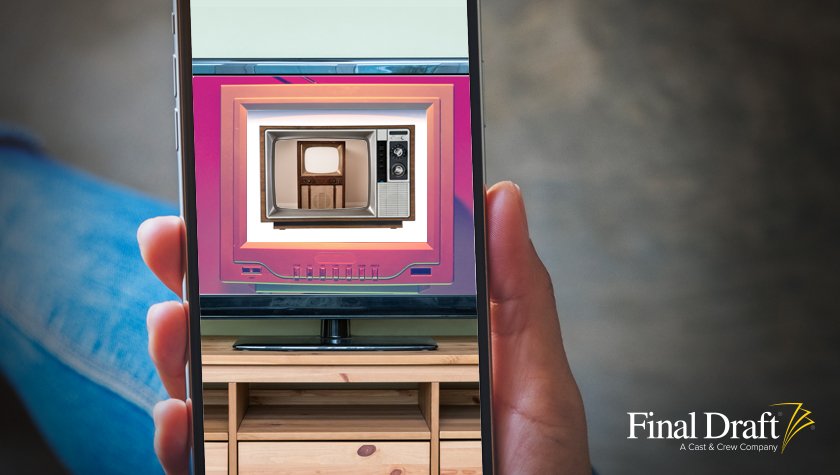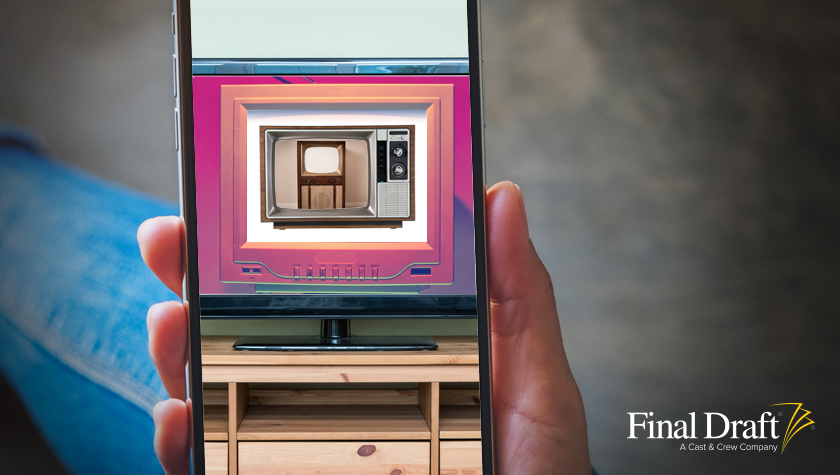The State Of Television Part 3: The Rise Of Streamers And The Opening For Niche Programming
February 27, 2020
House of Cards gets all the credit for building the streaming world we all live in by being the first original show on a streaming network. Too bad that's a filthy lie. Not only was House of Cards not the first, it wasn’t even the first on Netflix. A year earlier, on Feb. 6, 2012, Netflix premiered its real first show, the Norwegian co-production Lilyhammer. Eight days later, Hulu premiered its first original series, Battleground. House of Cards finally aired a year later, and only two months after that Amazon used its Prime Video platform to launch its inaugural pilot season that included future series Betas and Alpha House as well as a Zombieland pilot and Those Who Can’t, a sitcom that eventually moved to truTV as that network also wanted its own original content. And while the other services were only dipping their toes in the water with low-budget comedies while Netflix gambled big by giving a two-season, straight-to-series order to the splashiest package being pitched around town, the streaming world was already growing. And don’t believe the retcon that Lilyhammer doesn’t count as a Netflix show because it aired in Norway on NRK; if Netflix wants credit for Channel 4’s The End of the F***ing World it has to take credit for the rest of them. And don't believe the other bit of propaganda that Netflix ordered House of Cards because its futuristic algorithm told them it would be popular. Netflix ordered House of Cards because David Fincher was pitching a TV show starring Kevin Spacey at the exact moment the service wanted to make headlines.
With the success displayed by these three streamers, everybody wanted to get in on the action. It seemed like every week a new subscription service was opening its doors to consumers. Some of them offered original programming and others were hoping brand loyalty or additional perks would be enough to get people to part with an extra $10 a month. The only thing they had in common is that they all assumed they would get the same amount of subscribers as Netflix and found themselves unable to afford operating costs once they didn’t hit those numbers.
Some companies just didn’t have much luck when it came to the streaming game. Verizon bet large on three different platforms, two of them even focused on the same audience. The first, go90, targeted young viewers with shows produced by AwesomenessTV that included My Dead Ex and T@gged. Verizon spent big on the service’s content but had difficulty luring its target demographic away from YouTube. In 2018, go90 officially shut down. Verizon’s second service, a co-venture with AwesomenessTV rumored to be called “Made for Mobile,” was terminated before it even launched. Maybe the idea of shows designed exclusively for smartphones was too radical for Viacom. But I can guarantee if Jeffrey Katzenberg’s Quibi — an upcoming streaming service with shows designed exclusively for smartphones — is a huge success, there will be a lot of angry executives at AwesomenessTV grumbling about how they thought of it first. Verizon also tried to get an adult audience with its investment in Redbox Instant, a Netflix competitor based on the rental kiosk company. It launched in 2013 and shut down in 2014 after the service’s main users, people who were verifying stolen credit cards, were locked out.
In 2016, NBCUniversal launched Seeso with a focus on comedy, operating as the exclusive home to the entire run of Saturday Night Live and debuting exclusive shows like Dan Harmon’s HarmonQuest and Paul Reiser’s There’s… Johnny! Sadly, it closed down in 2017 before There’s… Johnny! even had a chance to air. Sony’s Crackle produced Snatch, The Art of More, StartUp, The Oath and, most notably, Jerry Seinfeld’s Comedians in Cars Getting Coffee before Sony sold the service to Chicken Soup for the Soul in 2019. Otter Media’s Fullscreen, much like Verizon and AwesomenessTV, bet that children who liked content on YouTube would pay $5 a month for that content, forgetting that kids don’t have money. It launched an SVOD service in 2016 with originals like Bret Easton Ellis’s The Deleted and others starring social media influencers. The service shut down in 2017 before it could air its new slate of shows. Yahoo Screen produced Sin City Saints, Other Space and a new season of cult favorite Community before shutting down in 2016, a move which helped lower its value so Verizon could buy it the next year. Verizon may have failed multiple times itself, but it was also quick to capitalize on others’ failures.
Even video game consoles got in on the action. Sony’s Powers was a PlayStation Network exclusive and Microsoft launched a big production company to make shows like Halo exclusively for Xbox Live subscribers. Both of these operations were shut down and Halo is now in production at Showtime. Other services that launched and closed inside the decade include Blackpills, FlareMe, Heera, Screen Junkies Plus, Stage 14, Streampix, Vessel, Vimeo Premium and Watchable. Foreign services weren’t immune to failure either as UK’s BBC Store, France’s CanalPlay and Canada’s Shomi all came and went within the same time period.
There are also costs associated with operating a streaming service that these companies may not have even been aware of. How many of them know that Netflix has to pay internet providers like Comcast to stop them from slowing down the speed of Netflix?
But while a mass of streamers disappeared and took their original programs with them, others thrived by only needing a small number of subscribers to cover their lower operating costs. These services allowed for incredibly niche programming that would never find a home on cable or network television. Shows like Titans on DC Universe, Creepshow on Shudder and Letterkenny on Canada’s Crave were huge hits for their respective services because they didn’t need millions of viewers to justify their existences. And a decade after AMC Networks changed the industry with Mad Men, it was succeeding again where others failed by leveraging its assets to create a slate of niche streaming services instead of putting all its content into one expensive basket. IFC Films Unlimited, Sundance Now and Urban Movie Channel all offer cinema lovers different genres, Shudder and Planet Horror have fans of gore covered, Acorn TV and Britbox inject a dose of shows from the UK and around Europe and AMC Premiere offers shows from the AMC catalog. CBS All Access chose to specialize in shows with brand recognition like Star Trek: Discovery and The Twilight Zone that could be sold easily into international markets, limiting the risk for the streamer. And established streaming services are still moving into scripted originals as Walmart’s Vudu did when it launched Mr. Mom, the first in its deal with MGM to produce original content based on movies that can be enjoyed by the whole family.
Others have had success with this specialized targeting of demographics. Crunchyroll is for anime fans; VRV offers cartoons from our past, Eros Now services Bollywood nuts, Brown Sugar offers blaxploitation films, BroadwayHD provides access to musical theater to those who can’t make it out to New York City, Kocowa is a partnership between Korea’s major networks while distributors like Shout! Factory and The Criterion Collection have found success by offering their catalogs to subscribers for a monthly fee. And this is just a small sampling of the hundreds of services available. Only some offer original scripted programming, but the rest have proven that a flagship show isn’t necessary when you’re giving your audience what they want.
Streaming became so dominant in the later part of the decade that, for the first time ever, the number of shows on streaming services surpasses the number on standard television.
As that bubble John Landgraf warned about continues to grow, we have to ask ourselves, “When will it finally burst?”
Written by: Conrad Sylvia
Conrad Sylvia is the creator of the The Week in Television, a private industry newsletter that recaps the week's television news in a humorous and unique manner. Throughout the years he has developed projects for studios and production companies and continues to provide freelance research on the current television landscape and international marketplace. He is also a fan of drinking in the bathtub. A full tub if he's happy, an empty tub if he's sad.



